kenya endangered species air safari conservation rhinos elephants scenic
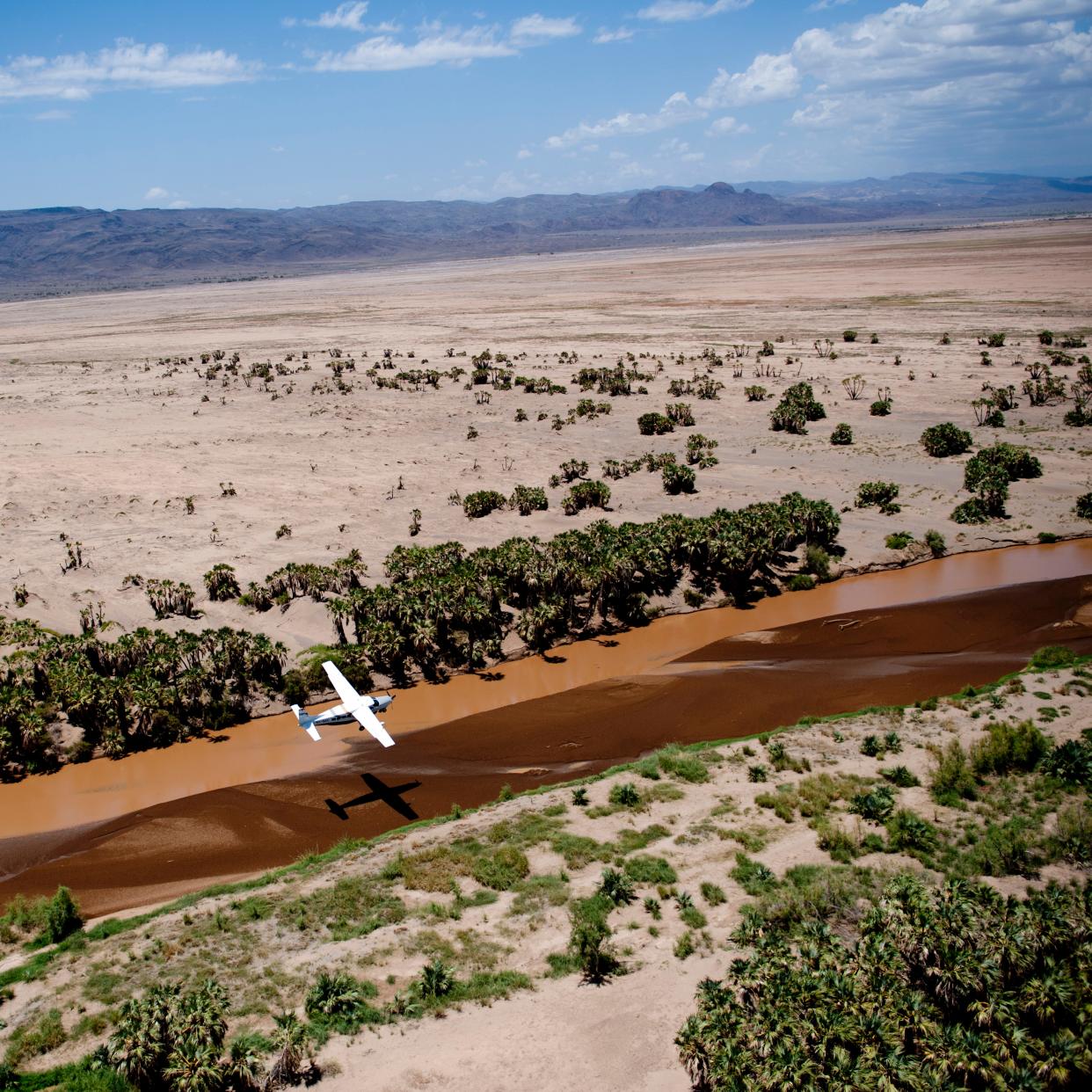
The male elephants were in must, which meant they were randy, aggressive and unpredictable. “Don’t move,” whispered Bernard, my guide, as a giant bull approached our Land Cruiser and peered down its enormous tusks at me. Move? I was frozen solid. Never had I witnessed such dangerous beauty, so close up.
I was still buzzing by the time we arrived at Save the Elephants, a UK-registered charity that operates out of a ramshackle research centre in Samburu National Reserve, Kenya. Here, I was brought down to earth by some sobering exhibits at the on-site museum.
“We often see this,” said Frank Pope, the charity’s chief executive officer, pointing to bullet holes in an elephant’s skull. “If you ran this through a metal detector, you’d find it was full of lead.”
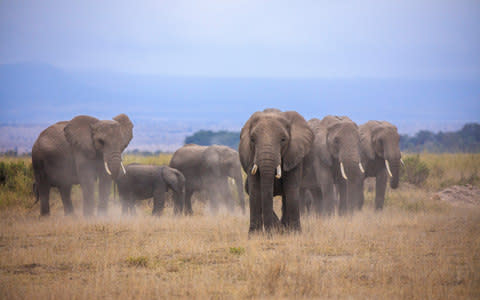
It’s a familiar story in Africa, where the population of savannah elephants has crashed from an estimated 1.3 million in 1969 to just 415,000 today. Statistics to you and me, mutilated bodies to the team at Save the Elephants, who have documented the slaughter.
That was the bad news; the good news?
“We anticipate the poaching crisis will end,” said Frank, citing China’s recent ivory ban – which Save the Elephants lobbied for – as a reason to be optimistic. “They’ve gone from being the biggest problem to one of the loudest voices against the ivory trade.”
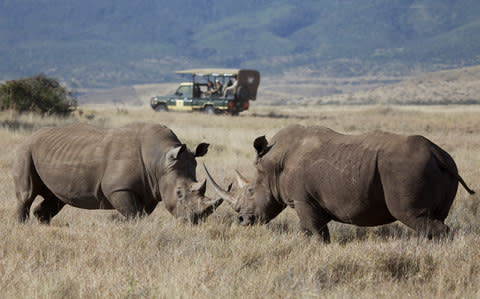
I was visiting Save the Elephants as part of a new endangered species safari in Kenya, devised by Torben Rune, the conservation-minded MD of Scenic Air Safaris. That such a package exists is a damning indictment of our stewardship of our environment, but it is hoped the experience will raise awareness among the privileged and influential about the parlous state of Africa’s wildlife.
The USP is access – to remote locations, vulnerable wildlife and pioneering conservationists – and though the subject matter can be challenging, the safari offers fascinating insights alongside unashamed luxury. Travel to national parks and wildlife conservancies is by private plane, and accommodation is at high-end lodges, where lavish boudoirs, fine cuisine and infinity pools await.
Our safari began in Nairobi, Kenya’s traffic-choked capital. From there we flew over the Great Rift Valley and into the Masai Mara National Reserve, low enough to see hippos splashing around in the Mara River below.
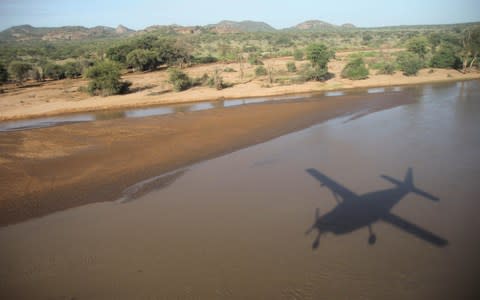
Murtaza, the captain, banked the Cessna for better views of the muddy waterway, which, during the annual wildebeest migration, is the scene of extensive carnage. It’s a good time to be a crocodile.
“Elephant at 11 o’clock,” Murtaza announced, before reeling off a who’s who of safari animals – giraffe, wildebeest, buffalo, zebra – all of which we could see from the plane. I didn’t know where to look.
Big cats were the focus in the Masai Mara, where I watched sodden cheetahs sit out a storm, lion cubs learn to hunt and a leopard groom herself by a stream, her eyes fixing on mine for one magnificent moment.
The thing about going on safari with conservationists is that they know where to look. Cue Dr Elena Chelysheva, a fast-talking cheetah expert from Russia, and David Mascall, a beer-swilling big cat specialist from Kenya, who, with the help of our Masai guide, Dominic, located five cheetahs and 31 lions in two days.
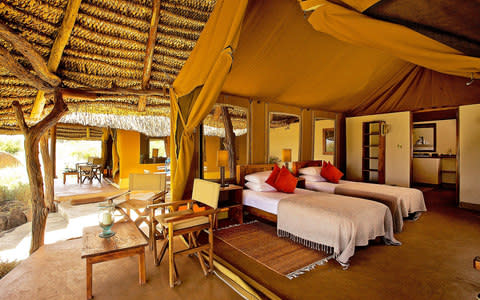
David told me he’d been attacked by a lion once – “longest 22 seconds of my life”– but devoted himself to protecting the big cats, which, like leopards, are persecuted by Masai herdsmen for preying on their cattle; when we met, he was trialling a light system to scare cats from cattle enclosures. “We’ve seen a huge reduction in retaliatory killings,” he said.
The Masai Mara is one of the best places in Africa to see cheetahs, but, warned Dr Chelysheva, their numbers have halved across the continent since the 1970s, due to habitat loss. She told me she hopes her research will identify land practices that benefit both man and cheetah – pertinent work, given Kenya’s human population is set to double by 2050.
We saw all of the Big Five in Kenya’s flagship reserve, though one species that’s definitely not endangered is man; tourists abound. Not so in Siana Conservancy. Located on the fringes of the government-run reserve, this 35,000-acre former cattle ranch is one of many privately managed conservancies in Kenya, which typically lease land from communities to set aside for wildlife.
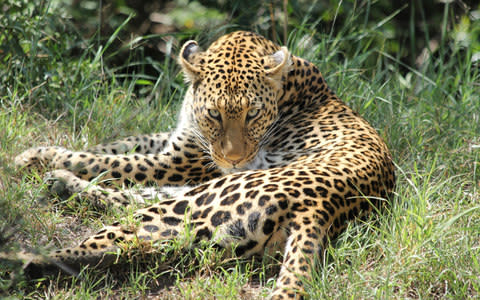
This conservation model is usually financed through high-end lodges, such as Spirit of the Masai Mara, where I stayed. Here, the wildlife came to me: I spotted giraffe from my bath, saw antelope while swimming in the pool and listened to baboons bantering while I tucked into a delicious dinner in the restaurant.
The lodge organised game drives, which usually ended with sundowners – cold gin and tonics in a warm corner of the conservancy – though one evening we went for beers at a nearby bar, where a Masai warrior called David sold me a murder weapon.
He initially joked that the rungu – or wooden club – was a back scratcher, before revealing that it was in fact one of three weapons used by the Masai to defend themselves from wild animals and enemy tribes; the other two being a spear and a knife. David had all three and looked like he was prepared to use them.
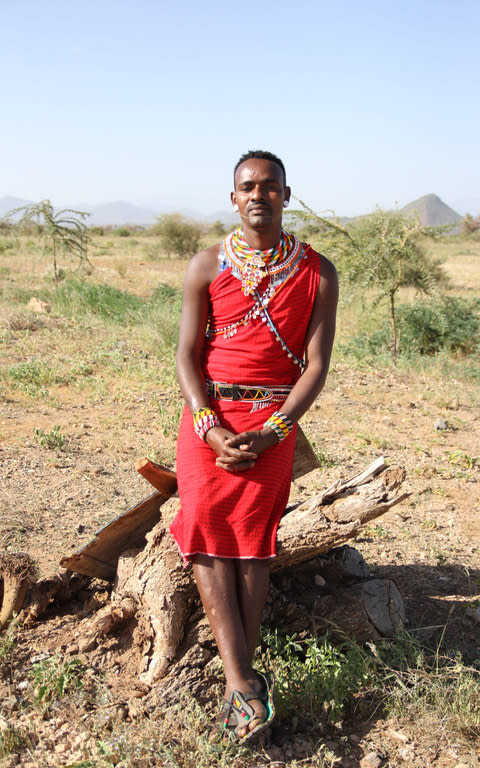
Wild dogs were the subject at Loisaba Conservancy, our next stop. There was just one problem: the local dog population had been wiped out by canine distemper. This was saddening and hugely disappointing, but it gave me a chance to sit back and luxuriate in Loisaba Tented Camp, which offers panoramas across the Laikipia plains towards Mount Kenya.
One evening, glass of port in hand, I watched elephants shuffle across the dusty plains from my tent, which was decorated with sumptuous fabrics and ornate furniture that could only belong to Africa. The following morning, this time with coffee, I witnessed daybreak from the lodge’s lofty restaurant.
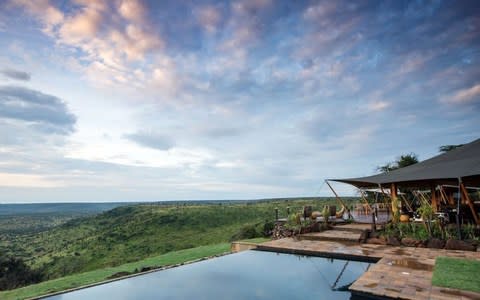
There were game drives here, too, with Moses and Solomon, two fun and fiercely intelligent Samburu guides, who talked to me about the challenges of balancing tribal customs with modern ideas. Samburu culture revolves around pastoralism – the more cattle you have, the wealthier you are – but Solomon and Moses feared large herds were becoming environmentally unsustainable and had decided to keep fewer cattle. On matters of polygamy, though, they were divided. “I might have another wife,” smiled Solomon, while Moses seemed happy to leave that tradition behind.
The orange earth turned green as we flew into Lewa Conservancy, which sits in the foothills of Mount Kenya and counts Princes William and Harry as regular visitors. Lewa has the distinction of being one of the most successful private conservancies in Kenya and is part-funded by Lewa Safari Camp, another dependably luxurious lodge with delicious food, excellent wine and a lavish safari tent that sent me off into a deep sleep, until I was gently woken by lyrical birdsong.
Lewa is all about rhinos, and numbers of black rhinos have increased by more than six per cent annually, bucking the steep decline seen elsewhere on the continent as demand for rhino horn takes its toll.
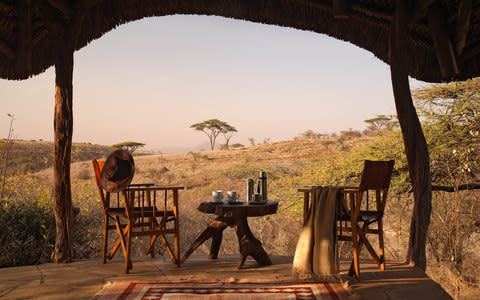
“In four years we’ve not experienced any poaching,” Lewa’s chief operations officer, Dr Tuqa Jirmo, told me. He attributes this feat to Lewa’s community outreach programme, which has seen the conservancy build schools, fund farming projects and offer apprenticeships – initiatives that have helped locals see the value of conservation.
I lost count of how many rhino I saw sweeping Lewa’s grasslands, but as the trip ended, I realised it was the elephants at Samburu National Reserve that would stay with me. I had watched them frolic in the Ewaso Ng’iro (Brown River), play-fight on its banks and have what didn’t always look like consensual sex in the bushes.
“You don’t see mating often,” Bernard had whispered to me, as a bull mounted a cow half his size. “You’re lucky.” Not so the poor female, whose partner lasted less than a minute: long enough, apparently, to warrant a round of trumpeting from the rest of the herd.
“They always have this crazy excitement when it happens,” said Bernard. And rightly so: the prospect of a baby elephant is an exciting one, never more so than now.
Bailey Robinson (01488 689700) offers a nine-day Endangered Species Safari from £15,500pp (based on two people travelling together) on a full-board basis, including international flights and the services of conservation experts. For more information visit scenicairsafaris.com.
British Airways and Kenya Airways offer daily direct flights to Nairobi from Heathrow. Return fares start from around £400.

